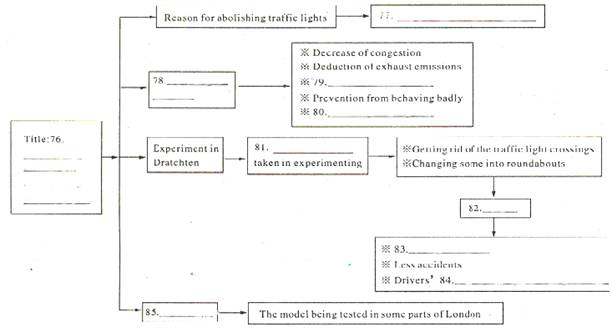题目内容
There are many theories about the beginning of drama in ancient Greece. The one most widely accepted today is based on the assumption that drama came from ritual (宗教仪式). The argument for this view goes as follows. In the beginning, human beings viewed the natural forces of the world, even the seasonal changes, as unpredictable, and they sought through various means, to control these unknown and feared powers. Those measures which appeared to bring the desired results were then kept and repeated until they hardened into fixed rituals. Eventually stories arose which explained the mysteries of the rites. As time passed some rituals were abandoned, but the stories, later called myths (神话), coutinued to exist and provided material for art and drama.
Those who believe that drama came from ritual also argue that those rites contained the seed of theater because music, dance, masks, and costumes were almost always used. Furthermore, a suitable site had to be provided for performances and when the entire community did not participate, a clear division was usually made between the “acting area” and the “watching area.” In addition, there were performers, and, since considerable importance was attached to avoiding mistakes in performing, religious leaders usually undertook that task. Wearing masks and costumes, they often imitated other people, animals, or supernatural beings, and used gestures about the desired effect, success in hunt or battle, the coming rain, the revival (复活) of the Sun. Eventually such dramatic representations were separated from religious activities.
Another theory traces the theater’s origin from the human interest in storytelling. According to this view, tales about the hunt, war, or other feats are gradually added in detail, at first through imitation, action, and dialogue by a narrator and then through the assumption of each of the roles by a different person. A closely-related theory traces theater to those dances that are primarily rhythmical and gymnastic or that are imitations of animal movements and sounds.
What does the passage mainly discuss?
A. The origins of theater. B. The role of ritual in modern dance.
C. The importance of storytelling. D. The variety of early religious activities.
What aspect of drama does the author discuss in the first parapraph?
A. The reason why drama is often unpredictable. B. The seasons in which dramas were performed.
C. The connection between myths and dramatic plots. D. The importance of costumes in early drama.
Which of the following is NOT mentioned as a common element of theater and ritual?
A. Dance. B. Costumes. C. Music. D. Magic.
According to the passage, what is the main difference between ritual and drama?
A. Ritual uses music whereas drama does not. B. Ritual is shorter than drama.
C. Ritual requires fewer performers than drama. D. Ritual has a religious purpose and drama does not.
【小题1】A
【小题2】C
【小题3】D
【小题4】D
解析:
【小题1】这是一道主旨题。根据文章第一句“There are many theories about the beginning of drama in ancient Greece.” 及第三段第一句“Another theory traces the theater’s origin from the human interest in storytelling.” 可知本文是讨论戏剧的起源的。故选项A为正确答案。
【小题2】这也是一道主旨题。本题可用排除法来做。通过阅读第一段,首先很明显可将选项B和D排除;选项A(戏剧无法预测的原因)也不正确,故只有选项C(神话与戏剧情节的联系)为正确答案。
【小题3】这是一道细节题。在做本题时要注意题干中的NOT。通过阅读文章很明显选项D
【小题4】根据文章第二段可知尽管有人说戏剧起源于宗教仪式,但是它们还是有区别的,例如:戏剧演出“perfonnances”要有合适的演出地点;戏剧表演时,“表演区”和“观看区”有明显的分界线,另外表演戏剧还要有演员。而宗教仪式在进行过程中为了避免犯错误都是由宗教领袖来进行,由他们戴上面具,
穿上服装来模仿其他人,动物或超自然的东西,做出一些动作以求达到目的。

 金钥匙试卷系列答案
金钥匙试卷系列答案